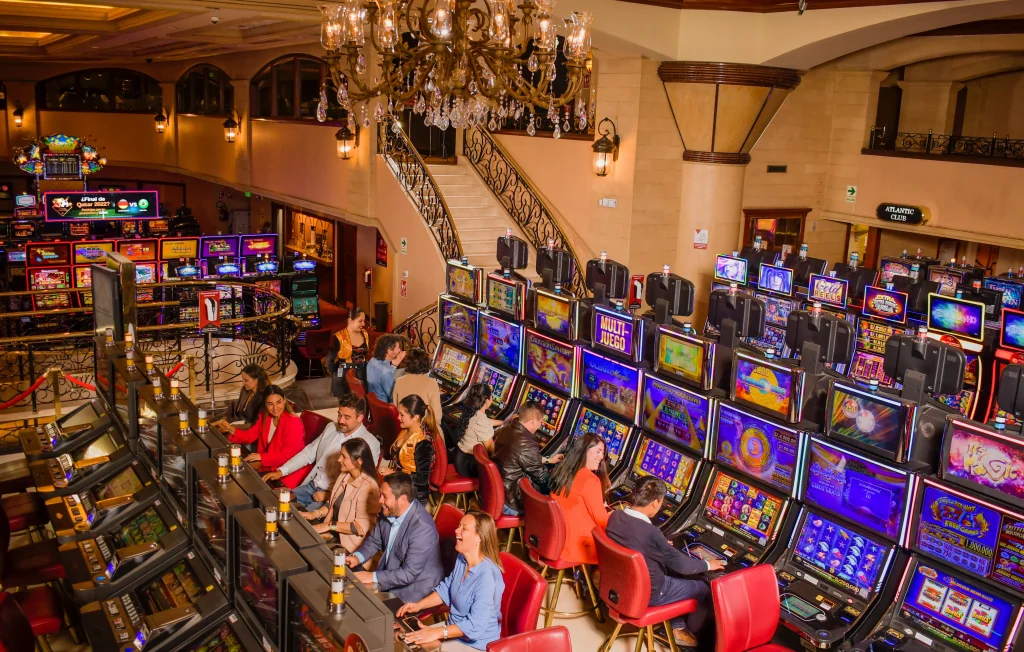
Within a vibrant and exciting world of gaming establishments, where luck and strategy intertwine, color and design play a critical role in attracting gamblers. UK gambling sites not on GameStop As soon as players step inside a casino or access a gaming platform, they are enveloped in a visual feast that grabs their attention and lures them to discover further. Vivid colors, engaging graphics, and creative layouts are carefully crafted to create an environment of excitement and anticipation, ultimately improving the gaming experience.
While players move through the dynamic landscape of casino games, they come across a variety of designs that not only serve aesthetic purposes but also influence feelings and choices. Hues like red and gold symbolize wealth and fortune, while calm navy and emeralds can create a more relaxed environment. Understanding how these elements work together enables casinos to create an inviting and energizing atmosphere that encourages players to engage with the games, invest additional time at the tables, and increase their overall enjoyment.
The Science of Color in Gaming Establishments
Color plays a key role in the design of gaming experiences, influencing players’ feelings and actions. Bright and bold shades, such as red and amber, are often used to ignite enthusiasm and attract attention. These hues create a sense immediacy and vitality, encouraging gamblers to involve themselves more readily with the experience. By thoughtfully selecting hues, creators aim to evoke emotions of joy and expectation, which can enhance the complete game experience.
Distinct colors also have psychological meanings that can impact how participants perceive their chances of winning. For instance, lime is commonly associated with fortune and wealth, making it a frequent choice in activities like the roulette wheel and poker games. This association can result gamblers to feel more hopeful and confident in their play, ultimately motivating them to wager more. Comprehending these associations allows game developers to design environments that enhance player satisfaction and engagement.
Moreover, the layout of casino game interfaces often uses color gradients and opposing hues to guide player actions. For example, successful results may be accentuated with bright, opposing colors, creating a visual cue. This approach supports positive outcomes and promotes repeated gameplay. By exploiting the science of color, gambling establishments can create games that not only attract players but also maintain them interested and invested in their game experience.
Creative Features that Attract Gamers
The visual appeal of gambling games is primarily influenced by the implementation of vibrant colors. Lively and contrasting colors are strategically chosen to create an inviting atmosphere that captures attention. For example, reds and golds often signify luck and wealth, which is why they are common in the color schemes of gaming machines and game surfaces. These colors not only attract players in, but they also stir emotions associated with excitement and expectation, enhancing the overall gaming experience.
In addition to color, the design and organization of casino games play a crucial role in captivating players. Games are designed to be intuitive, ensuring that players can quickly understand the rules and mechanics. User-friendly interfaces, along with engaging graphics and motion, help maintain player interest and promote extended play sessions. The tactile elements, such as the texture of the buttons and the audio of the games, also add to a holistic sensory experience that keeps players engaged.
In conclusion, conceptual elements in gaming design can significantly influence gaming decisions. Many gambling games are inspired by popular culture, myths, or adventure themes, incorporating symbols and characters that connect with players. These themes create a sense of immersion and relatability, making each game feel distinct. When players feel a bond to the theme, they are more likely to opt for that game over others, leading to higher participation and excitement within the gambling environment.
Case Studies: Successful Casino Game Designs
One key example of impressive gambling game design is the popular slot machine series themed around hit movies. Games such as those based on the The Wizard of Oz and Game of Thrones utilize vibrant colors and high-quality graphics to immerse players in familiar narratives. The application of moving visuals and engaging sound effects takes the attention of players, building an affective connection to the theme. This strategy not just fosters longer play but also enhances the overall gaming experience, yielding increased player retention.
Another effective case is the use of color psychology in table games like 21 and the wheel. Casinos often design these games with deep reds and greens, colors traditionally linked with luck and wealth. For instance, the emerald felt on a 21 table provides a calming effect, while the red accents in roulette invite anticipation. This intentional use of color helps to establish an inviting atmosphere that stimulates players to join in, addressing their psychological impulses and increasing their enjoyment.
Finally, social casino games that include community features and lively, dynamic designs have experienced remarkable success in engaging players. Games like Zynga’s Poker and Slot-O-Mania leverage striking colors and playful animations to create an inviting online environment. The addition of leaderboards, social sharing options, and in-app rewards fosters competition and community, attracting players in for longer sessions. Such designs not just make the games visually enticing but also highlight social connectivity, a vital factor in player retention and engagement within online casino environments.
